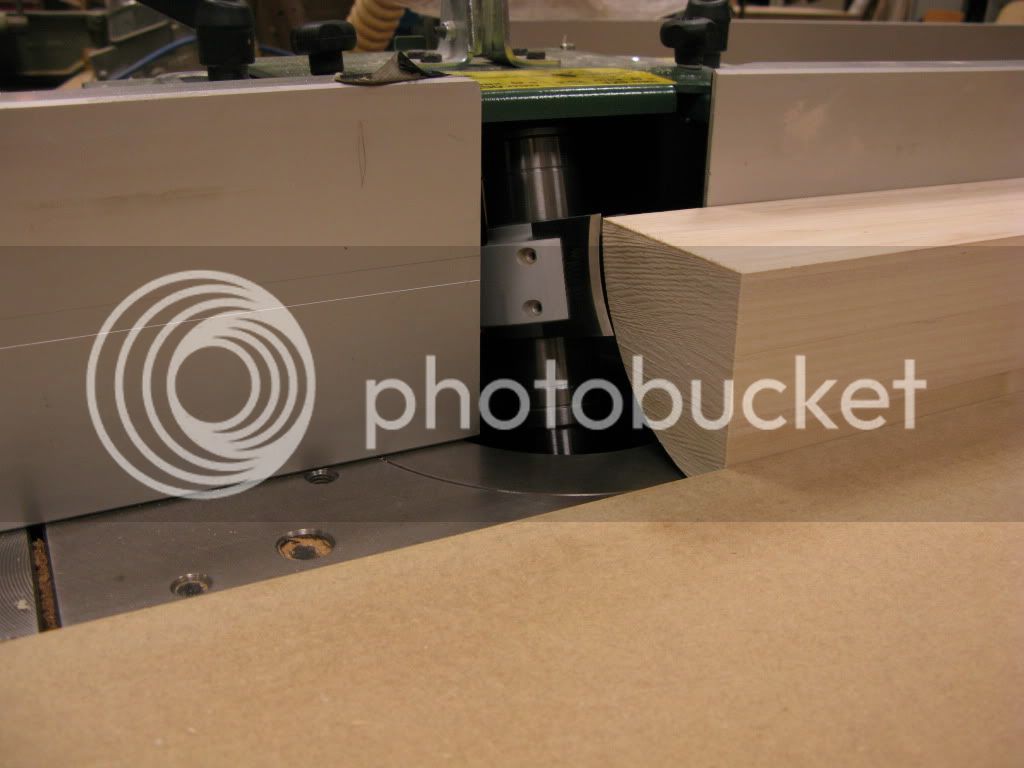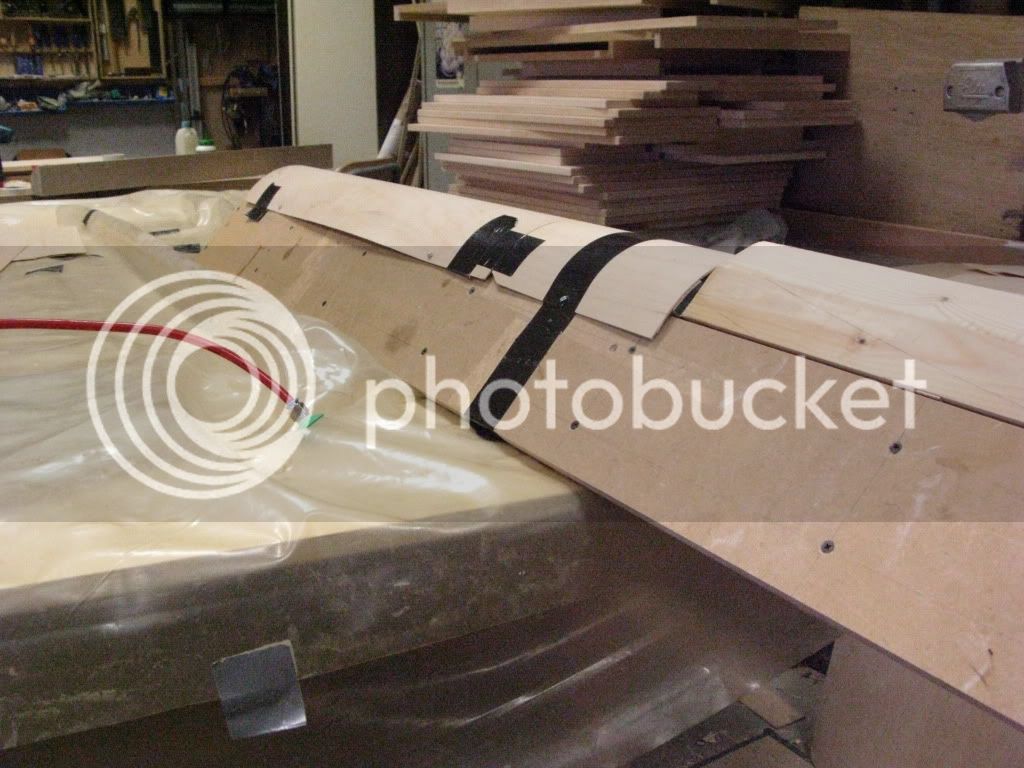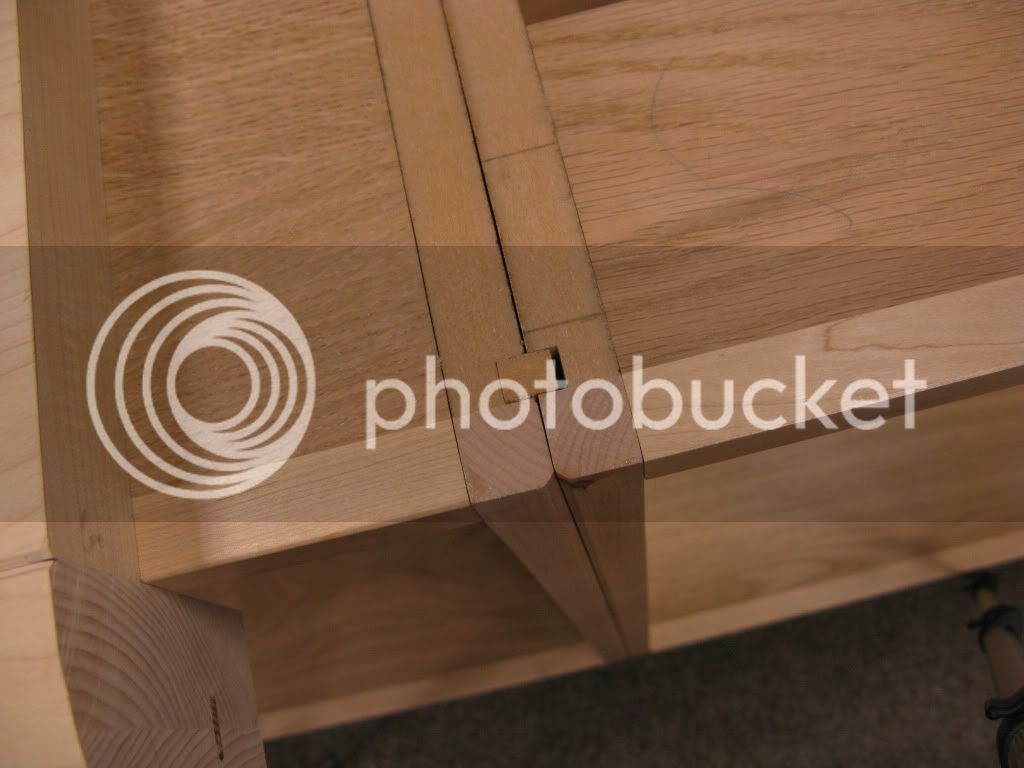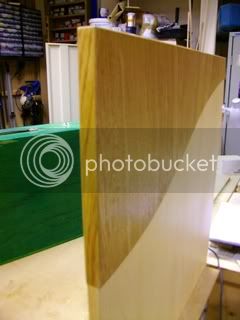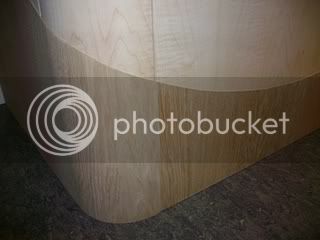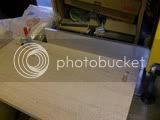Mr T
Established Member
Hi
I thought some of you may be interested in a kitchen job we are working on at present. Made in ripple maple with a raised oak wave motif, the work tops are maple and walnut with walnut plinths an details.
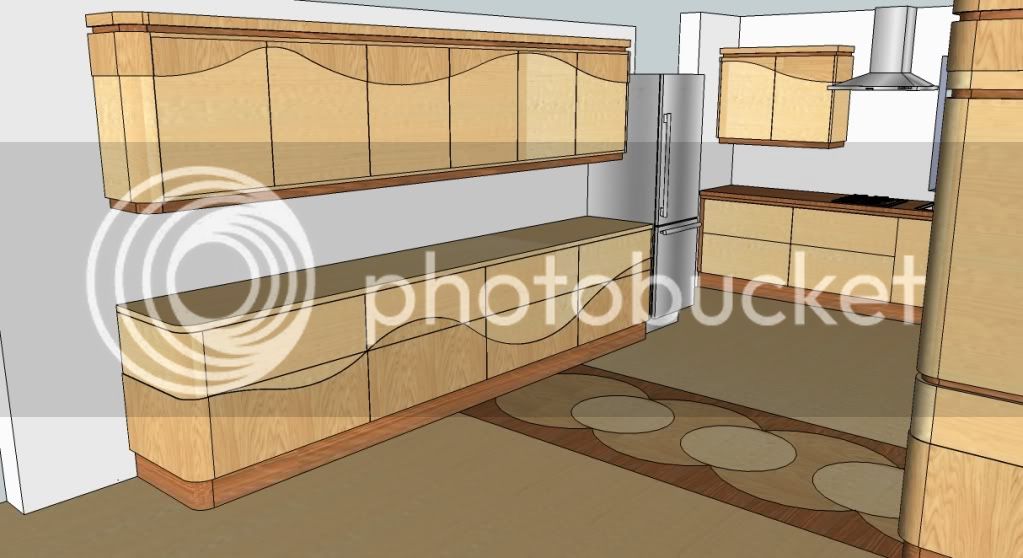
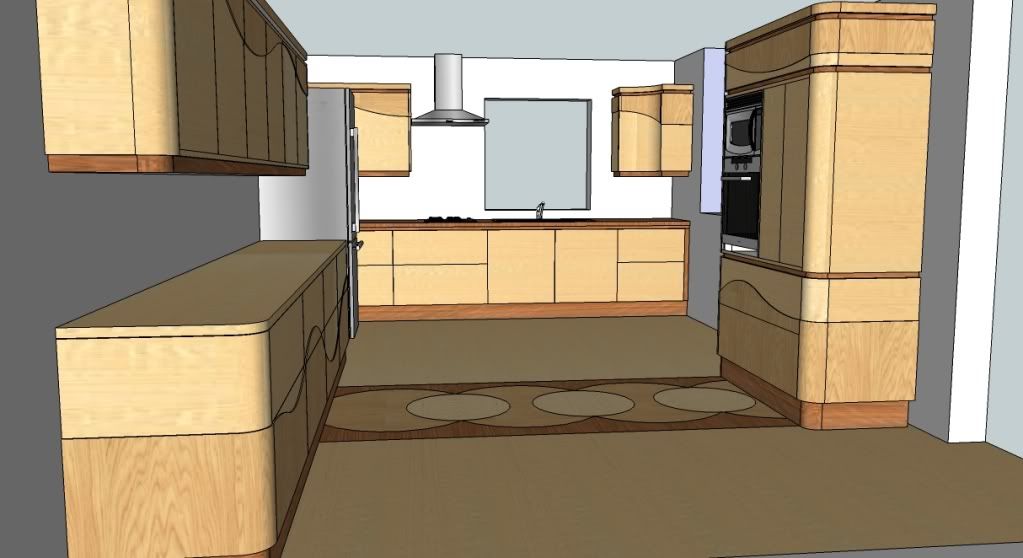
The carcases are oak veneered mdf dominoed and screwed. I know of another maker who doesn't domino or biscuit his carcases, just screwing them, what do others do?
There are about 48 doors,drawer fronts and end panels, all veneered in maple and oak. I shot the veneers on the spindle moulder, a new method for me, I was impressed with the results. The veneer pack was sandwiched between boards on the sliding table of my saw spindle, clamped and weighed down with large weights, then run against a straight cutter. Even some very brittle oak had a very smooth edge.

I'm using a method popularised by Robert Ingham for gluing the veneer joints. I've used this a lot for jointing 1.5mm veneers but not so much on standard veneers. Butt the veneer edges then slightly stretch masking tape across the joint, about 200mm apart, finally run a piece down the joint. Turn the sheet over and open the joints to apply a bead of glue using a nozzle cut to a birds mouth, the tape on the other side acts as a hinge for this. Clean off any squeeze out then run a tape down the joint ensuring that the jointed surfaces are level. After the glue has dried the tape should peel off easily. I find this a lot easier than using traditional veneer tape.
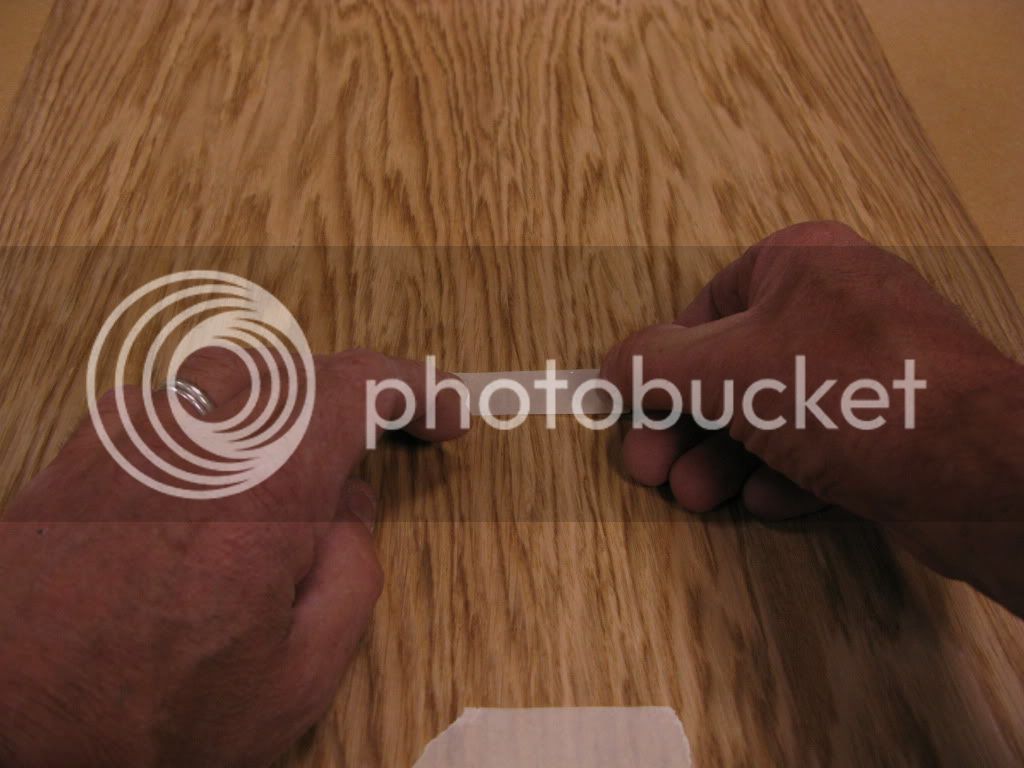


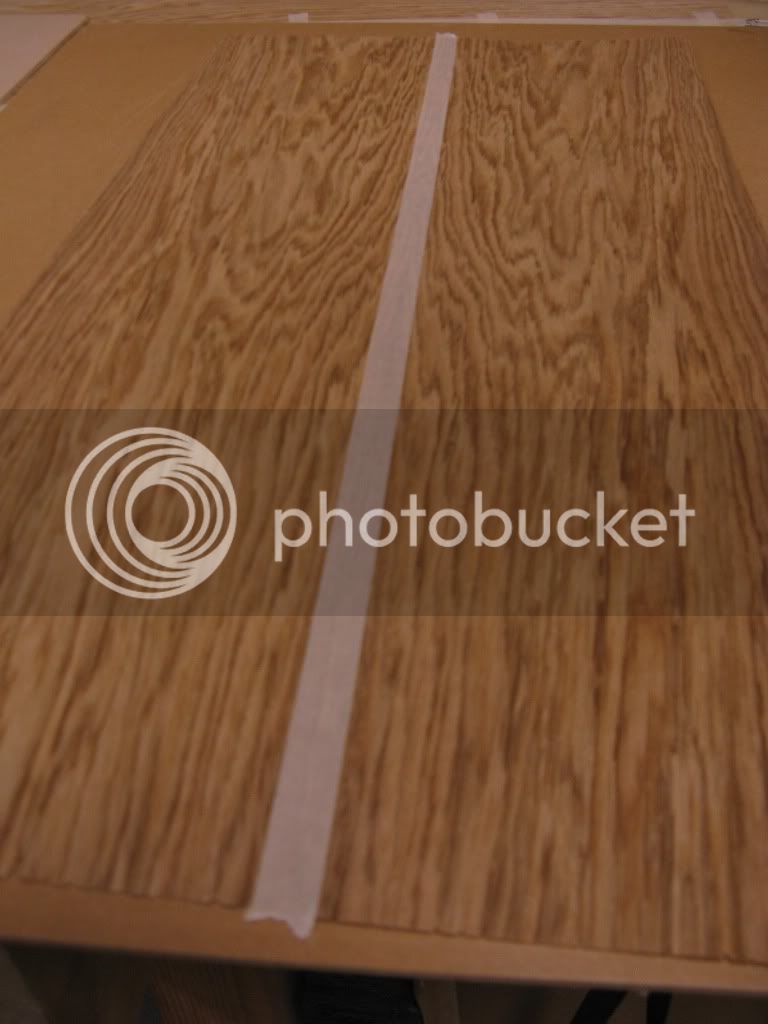
There are a number of challenges still to come on this project. I will report on how we dealt with them in due course
I thought some of you may be interested in a kitchen job we are working on at present. Made in ripple maple with a raised oak wave motif, the work tops are maple and walnut with walnut plinths an details.


The carcases are oak veneered mdf dominoed and screwed. I know of another maker who doesn't domino or biscuit his carcases, just screwing them, what do others do?
There are about 48 doors,drawer fronts and end panels, all veneered in maple and oak. I shot the veneers on the spindle moulder, a new method for me, I was impressed with the results. The veneer pack was sandwiched between boards on the sliding table of my saw spindle, clamped and weighed down with large weights, then run against a straight cutter. Even some very brittle oak had a very smooth edge.

I'm using a method popularised by Robert Ingham for gluing the veneer joints. I've used this a lot for jointing 1.5mm veneers but not so much on standard veneers. Butt the veneer edges then slightly stretch masking tape across the joint, about 200mm apart, finally run a piece down the joint. Turn the sheet over and open the joints to apply a bead of glue using a nozzle cut to a birds mouth, the tape on the other side acts as a hinge for this. Clean off any squeeze out then run a tape down the joint ensuring that the jointed surfaces are level. After the glue has dried the tape should peel off easily. I find this a lot easier than using traditional veneer tape.




There are a number of challenges still to come on this project. I will report on how we dealt with them in due course



































